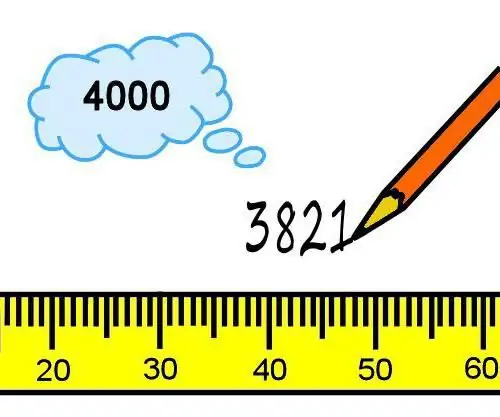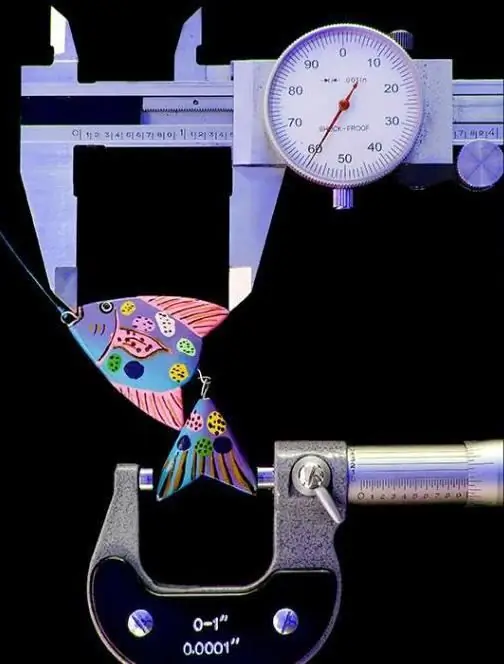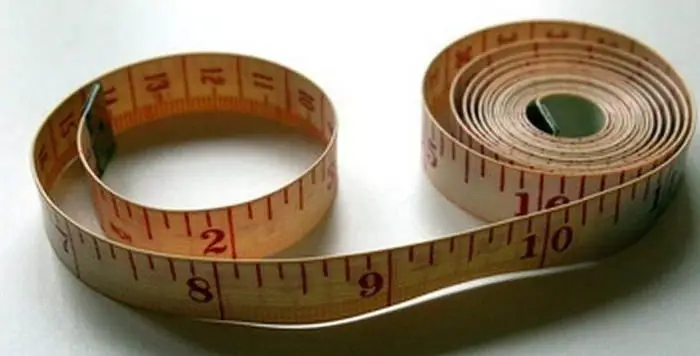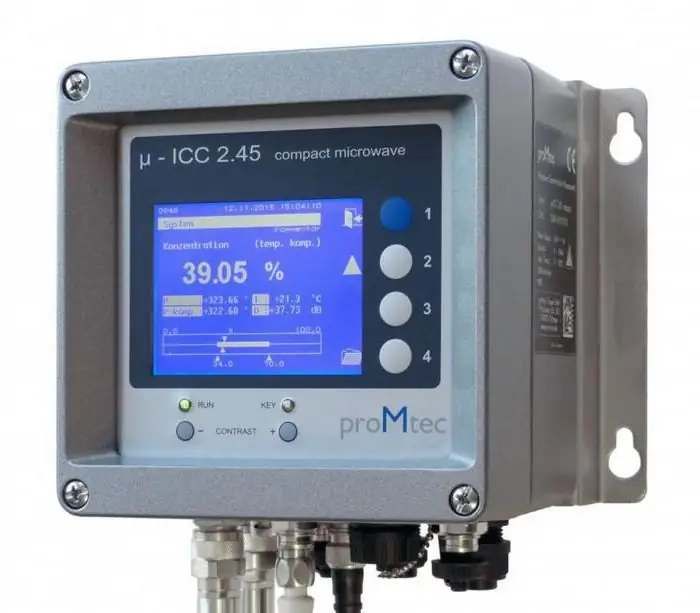Errors are deviations of measurement results from the real value of a quantity. The actual value can only be established by performing numerous measurements. In practice, this is impossible to implement.

For the analysis of deviations, the value closest to the true value is considered to be the actual value of the measured value. It is obtained using high-precision measuring instruments and methods. For the convenience of measurements, to ensure the possibility of eliminating deviations, different classifications of errors are used. Consider the main groups.
Method of expression
If we classify the errors of measuring instruments on this basis, we can distinguish:
- Absolute deviations. They are expressed in units of the quantity being measured.
- Relative deviation. It is expressed by the ratio of the absolute error and the measurement result or the actual value of the quantity being measured.
- Reduced deviation. It is the relative error expressedthe ratio of the absolute deviation of the measuring instrument and the value taken as a constant indicator over the entire range of the corresponding measurement. His choice is based on GOST 8.009-84.
For many measuring instruments, an accuracy class is established. The given error is introduced because the relative value characterizes the deviation only at a specific point on the scale and depends on the parameter of the measured value.

Conditions and sources
The main and additional deviations are distinguished in the classification of errors according to these criteria.
The first are the errors of measuring instruments under normal conditions of use. The main deviations are due to the imperfection of the conversion function, the imperfection of the properties of the devices. They reflect the difference between the actual conversion function of the device under normal conditions and the nominal one (established in regulatory documents (technical conditions, standards, etc.)).
Additional errors occur when a value deviates from the norm value or due to going beyond the boundaries of the normalized area.
Normal Conditions
The following normal parameters are defined in the normative documentation:
- Air temperature 20±5 deg.
- Relative humidity 65±15%.
- Network voltage 220±4, 4 V.
- Power frequency 50±1Hz.
- No magnetic or electric fields.
- The horizontal position of the device with a deviation of ±2 degrees.
Accuracy class
Tolerance limits of deviations can be expressed in relative, absolute or reduced error. In order to be able to choose the most suitable measuring tool, a comparison is made according to their generalized characteristic - the accuracy class. As a rule, it is the limit of permissible basic and additional deviations.

The accuracy class allows you to understand the limits of the errors of the same type of measuring instruments. However, it cannot be considered as a direct indicator of the accuracy of measurements carried out by each such instrument. The fact is that other factors (conditions, method, etc.) also influence the classification of measurement errors. This circumstance must be taken into account when choosing a measuring instrument depending on the accuracy specified for the experiment.
The value of the accuracy class is reflected in the technical conditions, standards or other regulatory documents. The required parameter is selected from the standard range. For example, for electromechanical devices, the following values are considered normative: 0, 05, 0, 1, 0, 2, etc.
Knowing the value of the accuracy class of the measuring tool, you can find the permissible value of the absolute deviation for all parts of the measurement range. The indicator is usually applied directly to the scale of the device.
The nature of change
This feature is used in the classification of systematic errors. These deviations remainconstant or change according to certain patterns when performing measurements. Allocate in this classification and types of errors that have a systematic character. These include: instrumental, subjective, methodological and other deviations.
If the systematic error approaches zero, this situation is called correctness.

In the classification of measurement errors in metrology, random deviations are also distinguished. Their occurrence cannot be predicted. Random errors are not accountable; they cannot be excluded from the measurement process. Random errors have a significant impact on research results. Deviations can be reduced by repeated measurements with subsequent statistical processing of the results. In other words, the average value obtained from repeated manipulations will be closer to the real parameter than that obtained from a single measurement. When the random deviation is close to zero, they speak of the convergence of the indicators of the measuring device.
Another group of errors in the classification - misses. They are associated, as a rule, with errors made by the operator, or unaccounted for the influence of external factors. Misses are usually excluded from the measurement results, not taken into account when processing the received data.
Dependence on magnitude
The deviation may not depend on the measured parameter or be proportional to it. Accordingly, in the classification of errors in metrology, additive andmultiplicative deviations.
The latter are also referred to as sensitivity errors. Additive deviations usually appear due to pickups, vibrations in supports, friction, and noise. The multiplicative error is associated with the imperfection of the adjustment of individual parts of the measuring instruments. It, in turn, can be caused by various reasons, including physical and obsolescence of equipment.

Normalization of characteristics
It is carried out depending on which deviation is significant. If the additive error is significant, the limit is normalized in the form of a reduced deviation, if it is multiplicative, the formula for the relative magnitude of the change is used.
This is a normalization method in which both indicators are commensurable, that is, the limit of the permissible main difference is expressed in a two-term formula. Therefore, the accuracy class indicator also consists of 2 numbers c and d in percent, separated by a slash. For example, 0.2/0.01. The first number reflects the relative error under normal conditions. The second indicator characterizes its increase with an increase in the value of X, i.e., reflects the influence of the additive error.
Dynamics of changes in the measured indicator
In practice, a classification of errors is used, reflecting the nature of changes in the quantity being measured. It involves the separation of deviations:
- To static. Such errors arise when measuring slowly changing ornot changing at all.
- Dynamic. They appear when measuring physical quantities that change rapidly in time.
Dynamic deviation is due to the inertia of the device.
Features of estimating deviations
Modern approaches to the analysis and classification of errors are based on principles that ensure compliance with the requirements for the uniformity of measurements.
To achieve the goals of assessment and research, the deviation is described using a model (random, instrumental, methodological, etc.). It defines the characteristics that can be used to quantify the properties of the error. In the course of information processing, it is necessary to find estimates of such characteristics.

The model is selected taking into account the data on its sources, including those obtained during the experiment. Models are divided into non-deterministic (random) and deterministic. The latter, respectively, are suitable for systematic deviations.
The general model for the random error is the value that implements the probability distribution function. Deviation characteristics in this case are divided into interval and point. When describing the error of measurement results, interval parameters are usually used. This means that the limits within which the deviation can lie are defined as corresponding to a certain probability. In such a situation, the boundaries are called confidence, and the probability, respectively, is called confidence.
Point characteristics are used in cases where there is no need or possibility to estimate the confidence limits of the deviation.
Evaluation principles
When choosing deviation estimates, the following provisions are used:
- Individual parameters and properties of the selected model are characterized. This is due to the fact that the deviation models have a complex structure. Many parameters are used to describe them. Their determination is often very difficult, and in some situations even impossible. In addition, in many cases, the full description of the model contains redundant information, while the knowledge of individual characteristics will be quite enough to implement the tasks and achieve the goals of the experiment.
- Estimates of deviations are determined approximately. The accuracy of the characteristics is consistent with the purpose of the measurements. This is due to the fact that the error characterizes only the zone of uncertainty of the result and its ultimate accuracy is not needed.
- Deviation is better to exaggerate than to underestimate. In the first case, the quality of the measurement will decrease, in the second case, the complete devaluation of the results obtained is likely.

Estimate errors before or after measurement. In the first case, it is called a priori, in the second - a posteriori.






